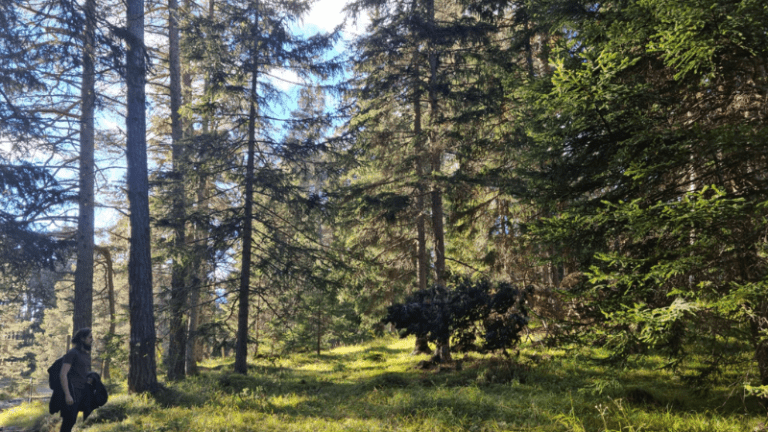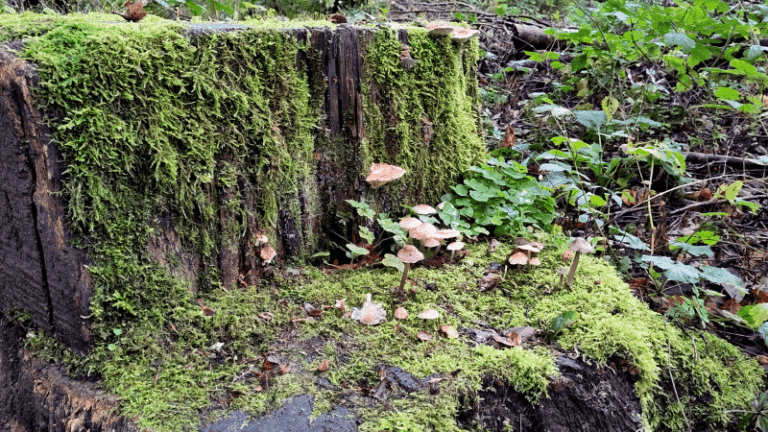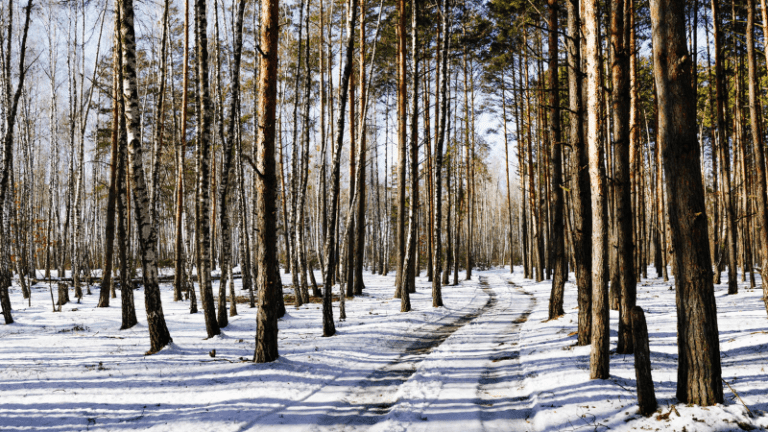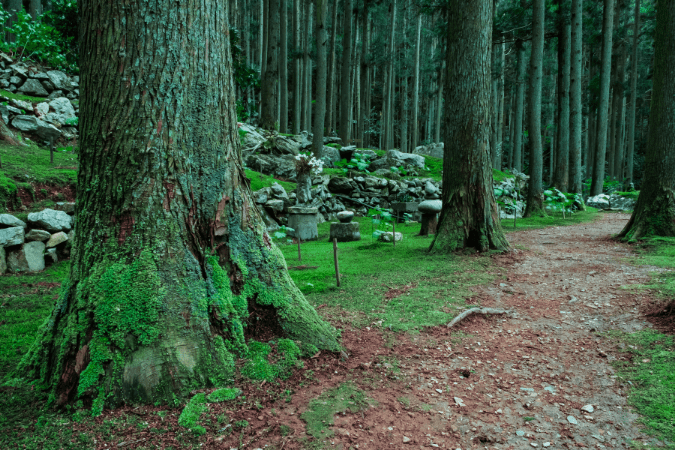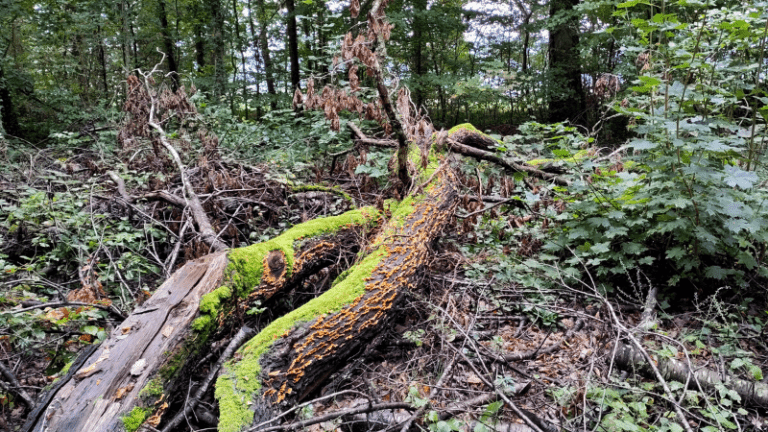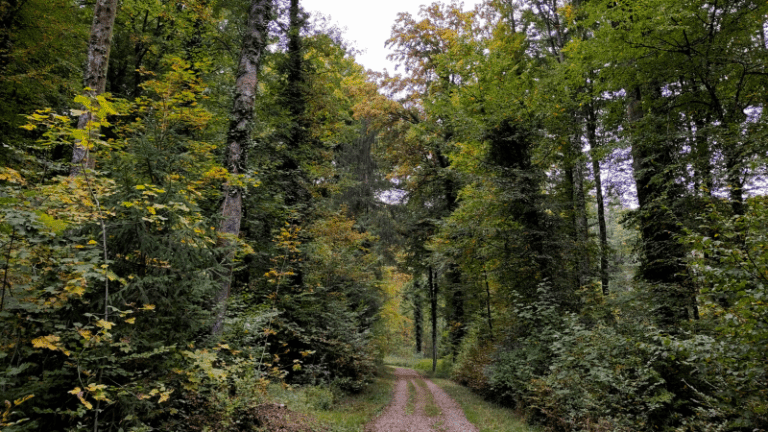Forest bathing: How to enjoy nature properly
Forest bathing, also known as Shinrin-yoku, is a practice proven to improve mental and physical health. It involves taking time to enjoy nature and all its benefits. When forest bathing, it's important to go slowly and take your time.
There are many things to do while walking, such as smelling the fresh air, breathing deeply, meditating, drinking tea, searching for food and water, touching the trees and plants, and listening to the sounds of nature. We will go into more detail about these things below.
If you want to know which places are suitable, this article is for you.
Being in the forest and taking time
The two most important things you can do is just be in the woods and take your time. It's important to slow down and really enjoy the experience. Walking slowly helps you pay attention to your surroundings and notice things you would miss if you moved faster.
As a rule of thumb, you should allow about two hours for a 2.5 km walk. That's about 20 steps per minute - that's pretty slow. But that's the point: take your time, look around, and take a break when you feel like it. Distance is not a hard and fast rule, but a point of reference.
Longer walks (a 4-hour walk) are more beneficial. If possible, choose this length and simply double the distance (5 km or 3 miles).
Of course, it's not always easy to find 2 or even 4 hours for a walk (especially if your forest swimming hole is further away). That's why it's okay to take shorter walks. Remember, something is better than nothing in this regard.
Smell (also conscious)
Smelling the fresh air is one of the best things you can do while forest bathing. The natural scent of trees and plants has been shown to improve mood and reduce stress. Why this is so. Because trees emit phytoncides and terpenes that saturate the air in the forest (or around trees in general).
They signal your sympathetic and parasympathetic nervous systems to relax. The sympathetic nervous system is responsible for the fight-or-flight response, while the parasympathetic nervous system is responsible for rest and digestion. In other words: By smelling these scents, you're telling your body to relax.
In addition, these natural chemicals have also been shown to strengthen the immune system. When you inhale these chemicals, your body produces more white blood cells that help fight off infections and diseases.
So take a deep breath and enjoy the forest air!
Take a deep breath
Besides the smell of fresh air, it is also important to breathe deeply while you are bathing in the forest. Deep breathing has many benefits, such as relieving stress, improving sleep, and reducing anxiety. When you breathe deeply, your body takes in more oxygen, which helps improve brain function.
Deep breathing is also beneficial as it helps reduce anxiety (this is also related to its influence on the parasympathetic nervous system).
The explanation why deep breathing has this effect is quite simple: your lungs absorb the terpenes better.
Experience the forest through touch
Touching the trees and plants while forest bathing is a great way to connect with nature. Touching the bark of a tree or the leaves of a plant can help you feel connected to the natural world around you. However, always make sure that you only touch plants that you know are safe to touch.
It is quite interesting to touch different surfaces. For example, rough bark, like that of spruce, feels different from smooth bark, like that of beech.
It may be that smooth barks feel kind of cool, which is nice in the summer, while rough barks feel kind of warmer, which is great in the winter.
Meditate in the forest
Meditating in the forest is a great way to focus on the present moment and connect with nature.
Since you are supposed to take things slowly in the forest, meditation is a good combination with Shinrin Yoku.
There are many different ways to meditate, so find one that works for you. You can try focusing on your breath or on the sounds of nature around you. You can also try walking meditation, where you simply focus on your steps and your breath.
One form of mindfulness meditation is zazen, a type of Zen meditation. It can be done while sitting or walking. If you want to try zazen, find a place in the forest where you can sit or stand comfortably. Then just concentrate on your breath and count each inhale and exhale. You can also try focusing on the sounds around you, or on your steps as you walk.
Drink tea
Drinking tea during forest bathing is a great way to relax and enjoy the experience. Tea has many benefits, such as reducing stress, improving sleep, and boosting the immune system. It's also a great way to stay hydrated while hiking. If you're not a tea drinker, you can also bring water to drink.
Search for food and water
Foraging for food and water while bathing in the woods is a great way to connect with nature. Foraging is simply looking for food and water in the wild. It is a great way to learn about edible plants and how to find them in the wild.
But there are a few things to keep in mind. First, make sure you only look for plants that you know are safe. Second, be mindful of where you forage. Avoid foraging in areas where pesticides or other chemicals might be used. And third, take only what you need. Leave something for the animals and for other people who may also be foraging.
What is safe to eat? I can't tell you that. For one thing, I'm not familiar with the plants and sources in your area, and for another, I don't have any expert knowledge.
A good rule of thumb is to eat or drink things only after a sensory analysis.
- Look at it: Does it look weird? Do the colors look food-technically unusual?
- Smell it: Does it have a pleasant smell? If not, move on.
- Touch it: Is the consistency slimy or too hard?
- Taste it: Put a small amount on your tongue. If you don't feel any adverse effects after a few minutes, you can probably eat it.
Probably! But I strongly recommend to check this with the help of a foraging book or an expert.
Some areas also have pretty good apps you can look up.
But when in doubt, don't eat it. Not at all.
With water, it's also not easy to tell if it's drinkable or not.
The best way to find out is to use a water filter or boil the water for at least one minute. Also, you should only use water from a natural source that is flowing and not stagnant.
In general, it's a good idea to learn about the area you're staying in before you go foraging.
But once you know what you can and can't eat, where you can and can't drink from, you can have a lot of fun.
There are many different things you can do while forest bathing. Find out what works for you and enjoy the experience! Thanks for reading. I hope this was helpful.
What are your favorite tips for enjoying the outdoors? Let us know in the comments below!


